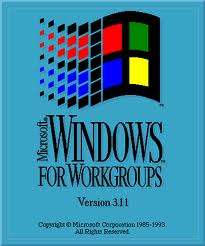SomeGuy
Veteran Member
When looking for a networking stack for Windows 3.x you have to ask the following questions:
Do you need network connectivity in real-mode DOS?
Do you specifically need the TCP/IP protocol?
Do you need a Windows Sockets (winsock) layer?
Do you need compatibility with 286 systems?
Do you need to use dial-up, a network card, or both?
There were a lot of different options for Windows 3.x. Microsoft Internet Explorer came with a dial-up TCP/IP stack that resembled that of Windows 95. Easy to use, but it did not support LAN networking or even co-existing.
Microsoft Windows for Workgroups 3.11 includes a 386 protected mode networking stack with a TCP/IP add-on. But it does not support Internet dial up, requires a 386, and is not accessible in DOS outside of Windows.
There was also a Windows for Workgroups 3.1, but that did not support TCP/IP.
For DOS print and file sharing there were lots of options, such as Lantastic, Pathworks, Microsoft LanManager client, Microsoft Workgroup add on for MS-DOS, Microsoft Networking Client. Those that supported TCP/IP may have also included a Winsock library for Windows applications that used the DOS based networking for communication.
For windows-only networking, there was also PC-NFSPro and NetManage.
Do you need network connectivity in real-mode DOS?
Do you specifically need the TCP/IP protocol?
Do you need a Windows Sockets (winsock) layer?
Do you need compatibility with 286 systems?
Do you need to use dial-up, a network card, or both?
There were a lot of different options for Windows 3.x. Microsoft Internet Explorer came with a dial-up TCP/IP stack that resembled that of Windows 95. Easy to use, but it did not support LAN networking or even co-existing.
Microsoft Windows for Workgroups 3.11 includes a 386 protected mode networking stack with a TCP/IP add-on. But it does not support Internet dial up, requires a 386, and is not accessible in DOS outside of Windows.
There was also a Windows for Workgroups 3.1, but that did not support TCP/IP.
For DOS print and file sharing there were lots of options, such as Lantastic, Pathworks, Microsoft LanManager client, Microsoft Workgroup add on for MS-DOS, Microsoft Networking Client. Those that supported TCP/IP may have also included a Winsock library for Windows applications that used the DOS based networking for communication.
For windows-only networking, there was also PC-NFSPro and NetManage.


